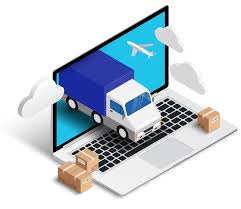In an industry historically reliant on manual processes, spreadsheets, and phone calls, the emergence of the digital freight marketplace is transforming the way shippers connect with carriers. These platforms harness the power of technology to streamline freight logistics, reduce costs, and improve transparency. For shippers—whether they manage a few shipments a month or operate vast logistics networks—the benefits of adopting a digital freight marketplace are substantial.
This article explores a digital freight marketplace, how it works, and why it has become an essential tool for modern shipping operations.
What Is a Digital Freight Marketplace?
Think of it as the logistics equivalent of an online travel agency: just as travelers use platforms like Expedia or Kayak to compare flights and book trips, shippers use freight marketplaces to compare rates, book transportation, and track shipments.
These marketplaces integrate various services—such as pricing algorithms, carrier ratings, shipment tracking, and document management—into a centralized digital platform. By eliminating the need for brokers or manual searches, they reduce friction, speed up operations, and enable data-driven decisions.
Key Benefits for Shippers
- Instant Access to a Wide Carrier Network
Traditional freight procurement often relies on established relationships with a limited number of carriers. While these relationships can offer reliability, they also limit flexibility and pricing options. A digital freight marketplace opens up access to a much larger pool of carriers, including vetted owner-operators and smaller fleets that might not be reachable through conventional means.
With broader access, shippers can find capacity faster, which is particularly useful during peak seasons or in tight freight markets.
- Real-Time Pricing Transparency
Freight pricing has traditionally been opaque, driven by phone negotiations, fluctuating market rates, and time-consuming quote comparisons. A digital freight marketplace introduces real-time pricing visibility, giving shippers immediate access to competitive rates based on current market conditions, route availability, and carrier capacity.
This transparency allows shippers to compare options and select carriers not just based on price, but also based on reliability, delivery time, and service quality.
- Faster and Easier Booking
Speed matters in logistics. Delays in securing transportation can lead to supply chain bottlenecks, late deliveries, or increased holding costs.Through intuitive interfaces and automated workflows, shippers can schedule loads, confirm shipments, and receive digital documentation in minutes.
This is especially valuable for small and mid-sized businesses that may lack dedicated logistics staff or sophisticated TMS platforms.
Operational Advantages
- Improved Load Visibility and Tracking
Knowing where your freight is at all times is crucial. A top-tier digital freight marketplace offers end-to-end shipment visibility, using GPS integration and carrier telematics to provide real-time tracking.
With proactive alerts and exception management tools, operations teams can respond quickly to disruptions, reroute freight if necessary, and keep customers informed about delivery timelines.
- Data-Driven Insights
Every shipment booked through a digital freight marketplace generates data about pricing trends, carrier performance, lane efficiency, and more. This data becomes a strategic asset for shippers, enabling better forecasting, smarter route planning, and cost optimization.
Many platforms offer built-in analytics dashboards, providing insights into KPIs like on-time delivery rates, cost-per-mile, or average lead time. With this information, shippers can continuously improve their logistics operations.
- Streamlined Documentation and Compliance
A digital freight marketplace automates much of the paperwork traditionally involved in freight logistics. Bills of lading, proof of delivery, rate confirmations, and invoices are digitized, stored, and retrievable on demand. This simplifies compliance audits and reduces the risk of lost documents or miscommunication.
Some platforms even integrate customs clearance tools and compliance checks for international shipping, helping shippers navigate complex regulatory environments.
Strategic Advantages
- Scalability and Flexibility
A digital freight marketplace offers scalability that manual systems or single-provider models can’t match. Whether a shipper is moving a single pallet or full truckloads across the country, the platform scales to meet demand.
In volatile markets—where fuel prices, regulations, and capacity fluctuate—this flexibility becomes a competitive advantage.
- Cost Reduction
Cost savings arise not just from more competitive rates, but also from increased efficiency. Time saved on quoting, booking, and follow-up translates into lower labor costs. Data-driven decision-making reduces empty miles, minimizes detention fees, and avoids premium charges associated with last-minute bookings.
Furthermore, the ability to benchmark rates against historical trends or peer averages empowers shippers to negotiate smarter and plan better.
Enhanced Collaboration and Trust
- Rating Systems and Carrier Reviews
A defining feature of digital marketplaces is the use of rating and feedback mechanisms. Just as consumers rate their experiences on Uber or Airbnb, shippers can evaluate carriers based on punctuality, communication, cargo handling, and more. This builds a transparent ecosystem where only reliable carriers thrive.
As trust builds over time, some platforms allow shippers to develop “preferred carrier” lists within the marketplace, combining the flexibility of open markets with the consistency of long-term relationships.
- Seamless Integration with Enterprise Systems
Modern digital freight marketplaces don’t exist in isolation—they integrate with TMS (transportation management systems), ERPs (enterprise resource planning), and inventory platforms. Booking a load can automatically trigger inventory updates, invoicing, or warehouse prep workflows.
APIs and EDI connections enable real-time data sharing, reducing manual data entry and minimizing errors.
Use Cases Across Industries
Shippers from a variety of industries—from retail and manufacturing to food and beverage—have found value in digital freight marketplaces. For example:
- Retailers use them to quickly secure spot rates during seasonal spikes.
- Manufacturers rely on them to move components between plants with minimal downtime.
- Distributors leverage real-time tracking to improve last-mile delivery reliability.
The outcome is the same regardless of the sector: more efficient, agile, and resilient freight operations.
Choosing the Right Digital Freight Marketplace
Not all platforms are created equal. When evaluating a digital freight marketplace, shippers should consider:
- Carrier Network Size and Quality: Are there enough carriers to handle your typical volume and lane mix?
- Technology and Usability: Is the interface intuitive? Does it integrate with your systems?
- Support and Dispute Resolution: Is customer service available if things go wrong?
- Reputation and Reviews: What do other shippers and carriers say about the platform?
Leading players in this space typically offer flexible contract models (spot, contract, dynamic pricing), value-added services (insurance, customs), and dedicated account management for enterprise clients.
Conclusion
The evolution from analog to digital in the freight industry isn’t just a trend—it’s a fundamental shift in how goods move. For shippers, embracing a digital freight marketplace means unlocking new levels of efficiency, visibility, and control. By reducing friction, improving transparency, and enabling smarter decisions, these platforms are helping logistics operations become more resilient and competitive.
In a world where speed, reliability, and cost-efficiency are non-negotiable, the digital freight marketplace isn’t just a convenience—it’s a necessity.



































